They are cheap, tasty and easy to eat on the go. It’s no surprise that the average Brit devours 66 grams, or just over two bags, per week. No matter how delicious and convenient they are, we constantly feel guilty about eating them: too processed, too much salt, too high in fat.
Maeve Hanan, a dietitian and founder of Dietetic Speaking, advises that chips can indeed be high in salt, fat and saturated fat, which studies have shown to have adverse health effects such as obesity, cancer and heart disease. The government recommends that men should eat a maximum of 30 grams of saturated fat per day, and women 20 grams. While a standard 25g bag of ready-to-eat salted chips contains 7.7g of fat, only 0.6g of this is saturated, which would place it in the medium or ‘orange’ category of the UK’s traffic light labeling system. Food Standard Agency, meaning ‘OK to eat most of it’. the time’.
The advantage is that chips contain energy in the form of carbohydrates, which fuel our body, and a small amount of fiber. And let’s not forget how delicious they are, as Hanan notes: “Food offers so much more than just nutrition, and for many people, chips can add pleasure and satisfaction to the eating experience.”
Are they really that bad for us? And how do our old favorites compare to some of the newer, “healthier” alternatives? Let’s dig in.
Walkers cheese and onion crisps
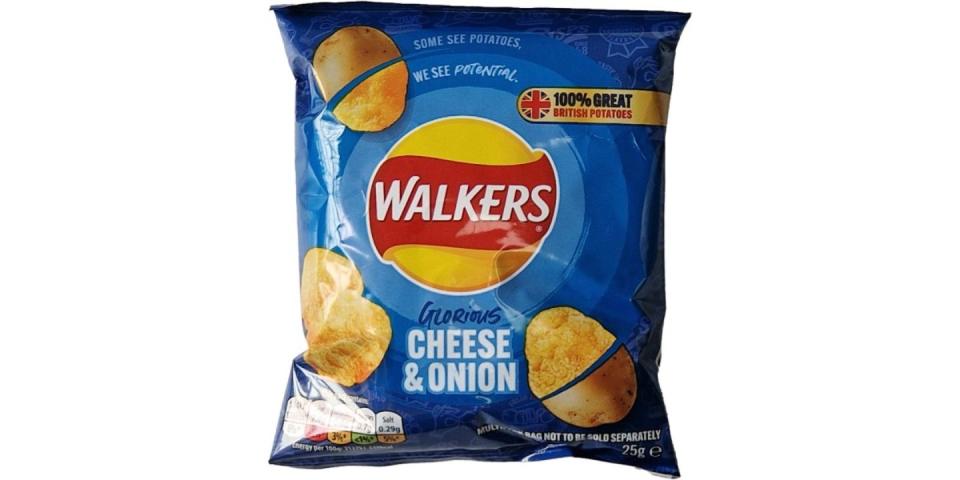
Nutrition per 100 g (package size 25 g): 514 kcal, fat 29 g (of which saturated 2.4 g), carbohydrates 54 g (of which sugar 2.6 g), protein 6.3 g, fiber 3.8 g, salt 1.2g
Taste: You have to hand it to Walkers, whether it’s just nostalgia or the 76 years they’ve been making chips, this is the ultimate in crispy cheese and onion, perfect thickness, not overly seasoned and extremely tasty.
Health: These chips are ultra-processed foods (UPF) and there is a long list of ingredients, some of which are unknown. For the rest there is nothing alarming, maybe a bit too much fat and salt, but fine as a snack.
Quavers
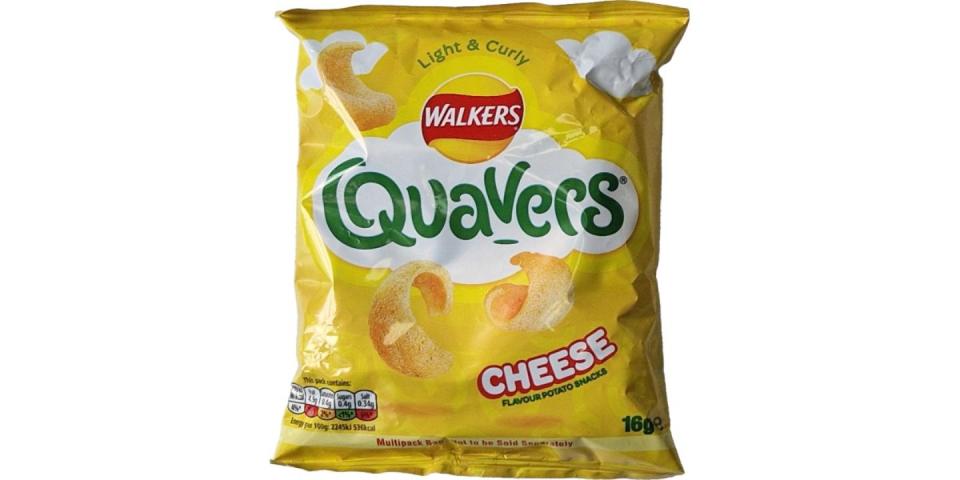

Nutrition per 100 g (package size 16 g): 536 kcal, fat 30.8 g (of which saturated 2.7 g), carbohydrates 62.1 g (of which sugar 2.7 g), protein 2.5 g, fiber 1, 2 g, salt 2.1 g
Taste: Having not had a shake in about 30 years, I was surprised at how artificial the cheese flavor was, with a strangely sweet, lingering aftertaste. Unpleasant.
Health: Another ultra-processed offering, with the flavor enhancer MSG listed twice in the ingredients for some reason. These chips had the lowest protein content, the second lowest fiber content and the second highest salt content of those tested.
Doritos spicy cheese
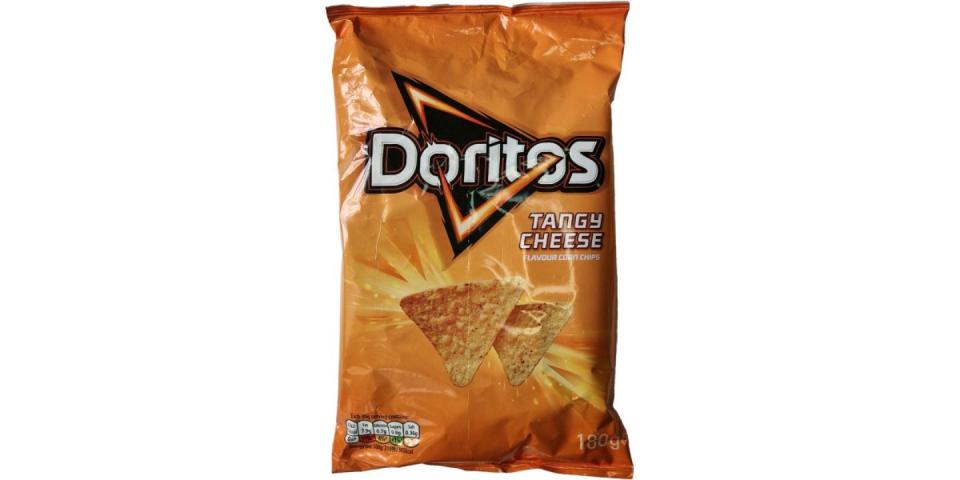

Nutrition per 100 g (serving size 30 g): 505 kcal, fat 26 g (of which saturated 2.4 g), carbohydrates 58 g (of which sugar 2.7 g), protein 6.5 g, fiber 5.7 g, salt 1.2g
Taste: You can just taste the roasted corn from the tortilla chip, but there is way too much spice in it that is reminiscent of stinky socks and not spicy at all, despite the name.
Health: A long list of unappetizing ingredients means we’re back in UPF territory, but these Doritos are surprisingly high in fiber and not as much salt as you might think.
Pringles salt and vinegar
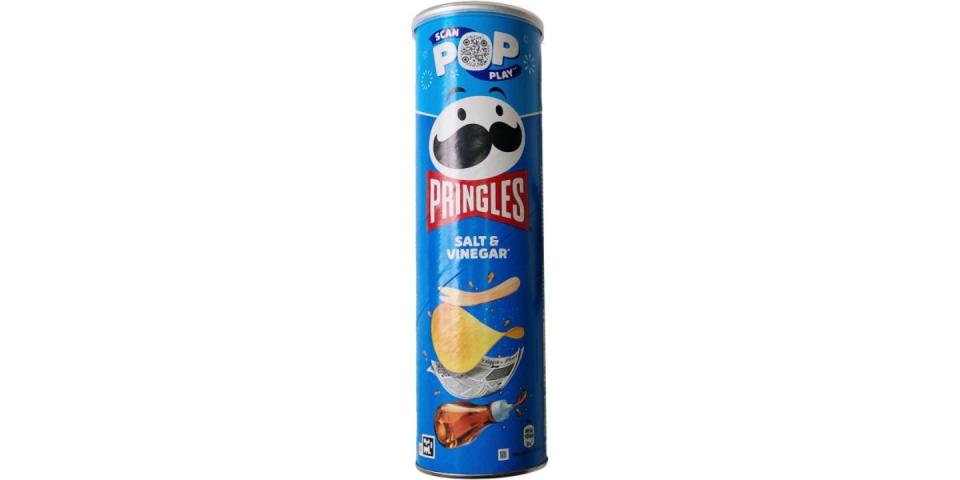

Nutrition per 100 g (serving size 30 g): 514 kcal, fat 29 g (of which saturated 6.3 g), carbohydrates 56 g (of which sugar 2.5 g), protein 5.7 g, fiber 3.3 g, salt 1.9g
Taste: The overwhelming, almost nuclear taste of salt and vinegar might appeal to younger palates, but for my more mature palate it was far too strong.
Health: You won’t be surprised to hear that these are ultra-processed and on the higher end of the scale for saturated fat and salt. Not the worst offender, but very little to recommend them nutritionally.
Hula hoop original
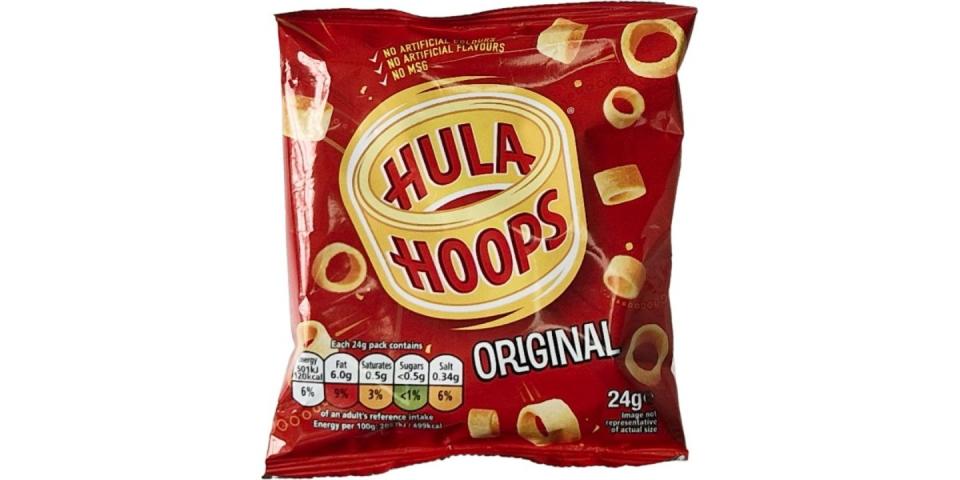

Nutrition per 100 g (serving size 24 g): 499 kcal, fat 25 g (of which saturated 2.2 g), carbohydrates 65 g (of which sugar <0.5 g), protein 3.1 g, fiber 2.6 g, salt 1.4 g
Taste: There’s something about the hula-to-hoop ratio that’s just perfect, and the simple, light salting makes this a real fresh classic.
Health: A nice surprise to see only six ingredients listed, and while still technically a processed food, definitely on the better end of the scale. Also one of the lowest sugar contents.
Kettle chips lightly salted
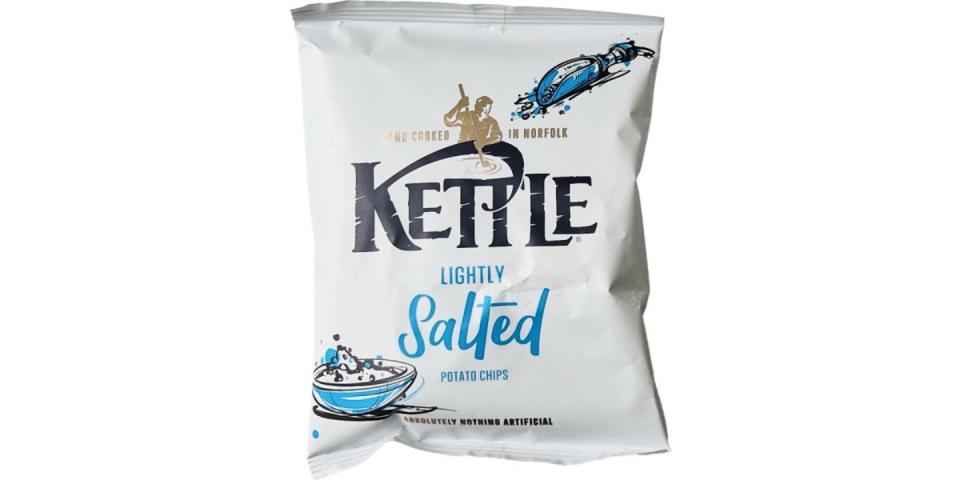

Nutrition per 100 g (serving size 25 g): 516 kcal, fat 29.5 g (of which saturated 2.0 g), carbohydrates 53.7 g (of which sugar 0.4 g), protein 6.5 g, fiber 5, 0 g, salt 0.7 g
Taste: These chips were my favorite, a ‘fresh from the fryer’ taste, enough salt to season without making you wrinkle, and perfectly crispy.
Health: As they proudly state on the packaging, these chips contain ‘absolutely nothing artificial’, just potatoes, vegetable oil and sea salt. They had the lowest sugar and salt content, better than average in protein and fiber, but were slightly richer in saturated fat. Nevertheless, my new go-to chips.
The ‘healthy’ chips
Manufacturers have been quick to exploit our ‘sharp guilt’, and there are now many ‘healthier’ crisps available on supermarket shelves. But as any smart consumer knows, just because a product claims to be healthier doesn’t mean it is. The ‘health halo’ is a tactic companies use to draw consumers’ attention to a beneficial aspect of a food, for example by saying it is ‘high in fibre’, to make the food seem better to you than it actually is . The same product may not only contain some fiber, but also be highly processed and contain a lot of sugar, fat or salt.
Popchips Sour Cream & Onion
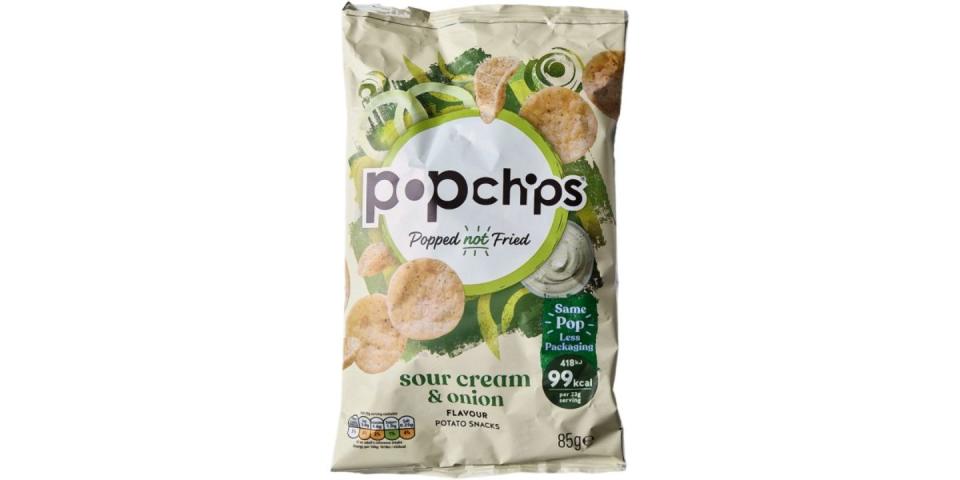

Nutrition per 100 g (serving size 23 g): 432 kcal, fat 13 g (of which saturated 1.7 g), carbohydrates 69 g (of which sugar 4.4 g), protein 6.7 g, fiber 4.8 g, salt 1.1g
Taste: I loved the crunchy texture of these popped chips, but felt they didn’t deliver enough sour cream and onion flavor. A bit disappointing.
Health: The advantage of ‘popped and not fried’ is clearly evident from the lowest fat content of our test chips, by some margin. Unfortunately, the sugar content was the second highest and the ingredients list includes maltodextrin, a UPF additive. They don’t quite live up to the hype.
Correct chips Barbecue Lentil chips


Nutrition per 100 g (serving size 20 g): 469 kcal, fat 19.4 g (of which saturated 2.9 g), carbohydrates 63.6 g (of which sugar 4.5 g), protein 9.5 g, fiber 0, 9 g, salt 2.55 g
Taste: I liked the spicy barbecue flavor, not too sweet, but the chips had a strange puffed tortilla texture that left a ‘pasty’ film in the mouth.
Health: No nasties in the ingredients list, which is a big plus, but the highest salt content and lowest fiber content of any chip, surprising considering lentils are a fiber-rich legume.
Tyrrells Sea Salted Vegetable Crisps
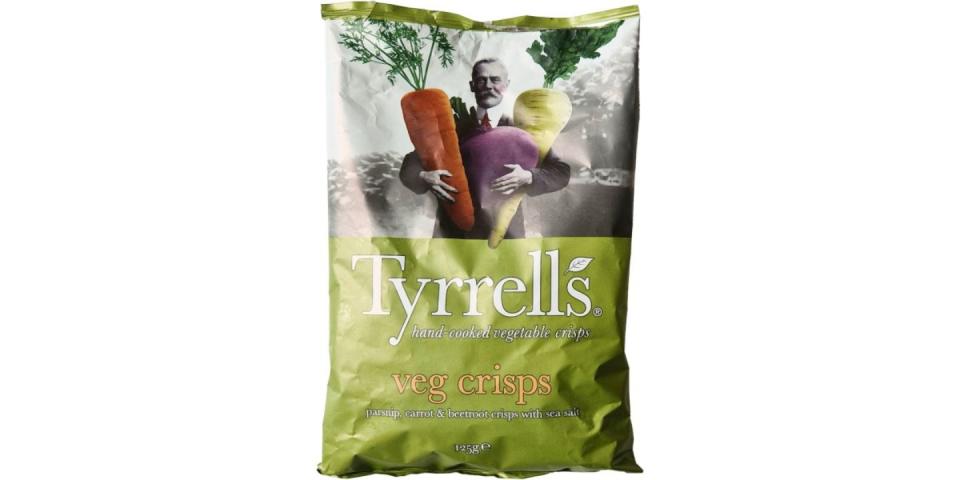

Nutrition per 100 g (serving size 30 g): 540 kcal, fat 37.9 g (of which saturated 4.0 g), carbohydrates 40.6 g (of which sugar 23.6 g), protein 4.8 g, fiber 9, 0 g, salt 1.1 g
Taste: For full transparency, I am a regular buyer of these chips, I love the mix of root vegetable flavors and the slightly chewy texture.
Health: These have by far the highest sugar content due to the natural sugars found in the vegetables, but no sugar has been added. They also had the highest fiber content of our selection, which smoothes out any sugar spikes. I will still buy them despite the high (natural) sugar content.
Off the Eaten Path Caramelized Onion and Balsamic Vinegar Pea and Bean Sticks
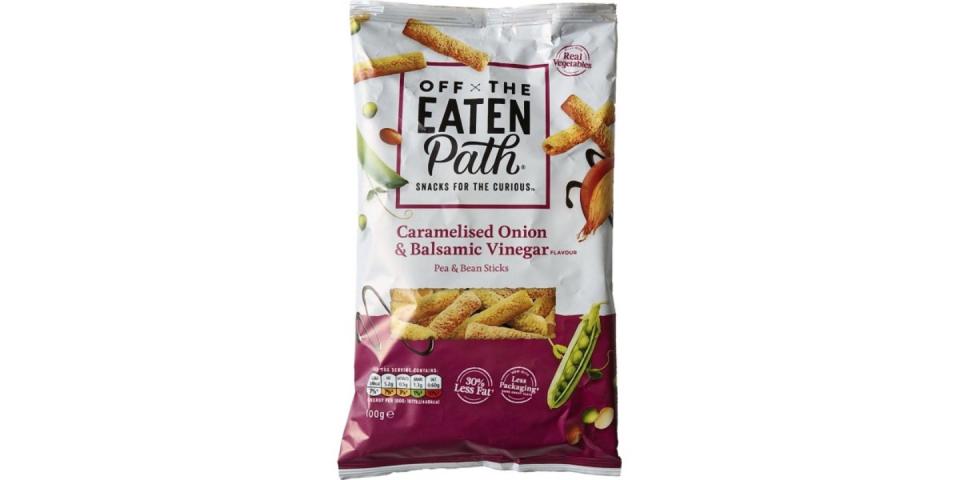

Nutrition per 100 g (serving size 30 g): 448 kcal, fat 17.2 g (of which saturated 1.8 g), carbohydrates 59.1 g (of which sugar 4.2 g), protein 9.6 g, fiber 9, 1 g, salt 2.0 g
Taste: I enjoyed eating these chips, which are reminiscent of Wheat Crunchies in shape and texture, although the salt and vinegar flavor could be a little stronger. Extra kudos for filling the bag to save on packaging.
Health: Nothing suspicious about the ingredients here and impressively low in fat, high in fiber and the highest protein content of 9.6g/100g. Just a little higher in salt than some others.
The conclusion
The result is that when choosing chips, or any food product for that matter, you ignore all the big health claims on the front of the pack and go straight to the information on the back. Chips marketed as ‘healthier’ often contain more saturated fat and salt and less fiber than regular chips, although the quality of the ingredients should also be taken into account.
Choosing products with minimal processing and natural ingredients without additives is always better for your health. The advantage is that chips contain energy in the form of carbohydrates, which fuel our body, and a small amount of fiber. And let’s not forget how delicious they are. As for Hanan, what chips does she recommend?
“I always recommend going for the type of chips you enjoy the most as this is best for your relationship with food.”